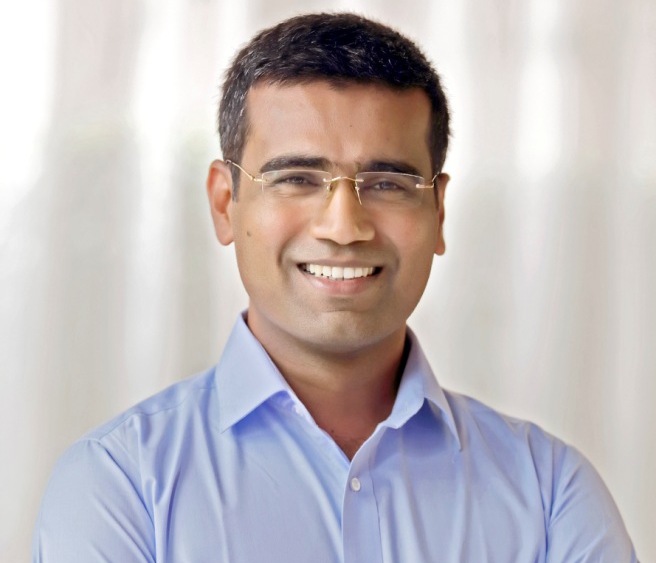
Abhay Doshi, senior VP, Product and Marketing at Flytxt, says that the telecom regulatory pressures, advancement in technology and increased competition from multiple fronts have forced telecoms companies in India to explore new strategies of growth.
2016 is expected to be a year where some of these strategies will begin to yield results and some new trends emerge as the dynamics of telecom industry continues to change.
4G yet to spread its wings, will drive-down data tariffs. 3G will become affordable and mainstream
As Reliance Jio ups the ante in the mobile data market with its 4G launch, albeit, the non-commercial one, the industry is set to witness downward spiral in the data tariffs, driving the mainstream adoption of 3G data packs. Bharti Airtel, Vodafone, and IDEA will look to defend their market share and consumers will eventually benefit both in terms of prices and quality of service. While 4G launches will spur the data usage in the industry, 4G adoption will see limited success in 2016. Before operators go live with their networks, they have to overcome some difficult technological and logistical challenges given the evolutionary phase of Mobile WIMAX and LTE. Besides, new entrants like Reliance Jio would also need to enable their mobile towers with 4G equipment. The incumbents will benefit as they can strap the 4G equipment to their existing towers.
After the dust settles, Free-internet will be available in one form or the other
Facebook heightens the stake in pushing its internet.org initiative with the rebranded “Free Basics “campaigns. This will intensify the debate on the Net Neutrality across the country. 2016 will be the year when a digitally emerging country like India, would witness participation from millions of first-time Internet users on mobile and Free-internet would garner more support. Moreover Digital India initiative likely to kick off with a big bang plan to equip 2500 cities with free 4G-level Wi-Fi. Sponsored internet will grow in one form or other, be it government sponsored, industry sponsored or brand sponsored.
Long overdue industry consolidation resulting into 5-6 telecom operators and 2-3 tower companies
While the nation witnessed the great e-commerce war in 2015, Telecom industry presents another battleground for unveiling in 2016, which could be even bigger perhaps and nastier corporate battle. The Union cabinet acceptance of rules to allow telcos to buy and sell unused spectrum among themselves is likely to drive a wave of consolidation in 2016. The Telco market is likely to stabilise to 5-6 players, in tandem with global standards to improve margins, operating profitability, and the cash-flow situation. Given the capital intensive nature of the tower industry and the resulting scenario of operator consolidation, Telecom tower industry is also slated for consolidation. The bigger tower companies will offer key advantages to telecoms, including reduced time to market for rollout, operator driven discounts etc.
Indian operators will gravitate towards device bundle and reverse bundle strategies
In 2016, Indian operators looking to push 4G services would be highly motivated to reduce the adoption barrier for consumers through bundling to offer handsets at subsidized rates lead by Reliance Jio and followed by rest. As Aadhaar has not reached the required maturity or acceptability in India the reverse bundling strategies will also come into play. Industry seems ripe for game-changing innovations as Reliance Jio plans to team up with Chinese handset makers for bundling their products with its 4G services and Microsoft India partners with Airtel for 4G data-bundling pact for the recently launched Lumia 4G smartphones.
Emerging face of unconventional digital asset monetisation
Monetizing the valuable digital assets will propel the operators on a transformation trajectory. While infrastructure enables the operators to monetise their networks and services, mobile consumer analytics and packaged insights will also enable them to explore more revenue streams. Newer asset monetisation options will emerge in 2016 beyond Payments and Advertising, Operators will embark onto a journey of becoming Multi-service Providers through acquisition and partnerships with forays in identity management, audience measurement, market research, m-education, m-health, M2M etc.
Dominance era of Single IT system integrator will come to an end
Challengers in the services industry are quickly gaining grounds against established leaders. Focus from visionary and niche players on next generation technologies and delivery excellence in SMAC will bring forth a range of system integrators in the telecom domain.
New dawn of Investment cycle into infrastructure, analytics platforms and partnerships
2016 presents a great opportunity for various operators in the fast-unfolding, complex web of value-ecosystem to emerge as Multi-service Providers in the Indian telecom market. The time is ripe for operators to identify key growth segments, form partnerships with various players across the value-web including content aggregators, advertisers, and technology platform enablers and deliver delightful experiences to consumers while creating significant value for everyone in the ecosystem.
Improvement in Quality of Service moves to the top shelf
2016 will be a year when communication Ministry, TRAI and rising consumer expectations will intensify the pressure on operators to improve Quality of Services.
With Bharti Airtel leading the way with the announcement to spend Rs 60,000 crore in three years to upgrade its mobile broadband network to improve network quality, other incumbents and new entrants will need to prioritize the improvement of network quality.
Smartphone will lead the way: Dragon breathes fire while the elephant marches on
2016 will be the year when smartphones will tilt the balance in their favour in the consumer handset ownership market. As the second wave of Chinese smartphone brands swamp the Indian market, the battleground with local players will intensify even further. While the Chinese vendors look to capitalize on their manufacturing prowess and online-only sales channels to drive down the cost, they also face the challenge to adopt multiple distribution models and provide after-sales support services. That is an area where Indian manufacturers have a distinct advantage.

By Abhay Doshi, senior VP, Product and Marketing at Flytxt





